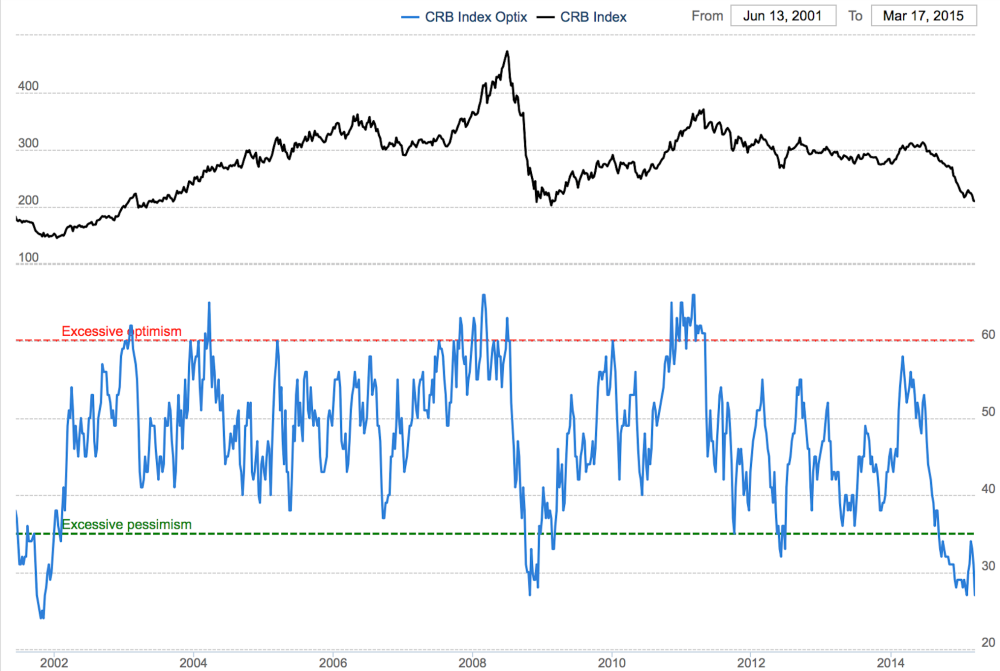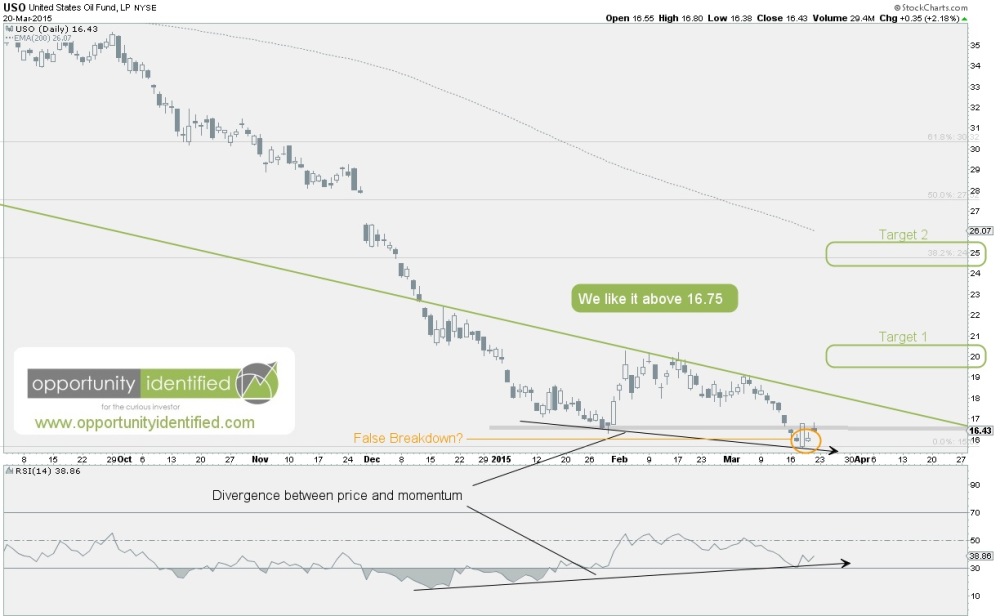Back in February, we highlighted some important developments which could impact the months ahead. One of those developments was the consolidation of the U.S. Dollar. Back then, we wrote:
Another important development is the consolidation of the U.S. Dollar… the US Dollar broke out above previous resistance in the 4th quarter of 2016. On the daily chart of the U.S. Dollar, we’re compressing between $99 and $101. A break above the upper green trendline would signify a resumption of the uptrend started in 2014. And if price moves below $100, there is no reason to own the greenback. If the Dollar moves down through this important level, we could have a false move on our hands…
Here’s the U.S. Dollar back on February 27th:
The power of using price charts is we can identify where demand and supply dynamics change and use these levels to manage risk, the most important part of being a market participant. We identified the $99-100 level as important support. Here’s the updated chart:
We can quickly see the Mighty Dollar broke down below the important $99-100 level, creating a false move. From false moves come fast moves in the opposite direction. As market participants, we didn’t need to predict the Dollar’s next move. We just need to have a game plan if buyers didn’t show up where they should have. They didn’t show up, opening up the window to the next possible level of logical demand from buyers. In our follow-up post from May, we wrote:
If the selling continues, we’d expect buyers to show up near the $92-93 handle
Six months after recognizing the potential for a false move, we’re at the $92-93 level in the U.S. Dollar. In fact, the U.S. Dollar has fallen over 10% since we identified potential selling pressure on the world’s reserve currency of choice. While the visual math of supply and demand for the Greenback pointed to potential demand issues, The Economist was busy regurgitating the popular narrative at the time:
We can’t make investment decisions based on magazine covers. That would be as silly as trying to predict where the market will be by the end of the year. We’ll leave that for sell-side jockeys and magazine publishers. But we can use visual math (aka charts) to identify important support and demand levels for any liquid asset. Today, we’re in the $92-93 window identified back in May. Buyers have shown up to at this level many times over the past three years. Will they do so again? We have no idea. No one does (except maybe The Economist – sorry, couldn’t resist another jab). Our job as market participants is not to predict. Our job is to manage risk by identifying if/then scenarios to operate from. Here’s the visual:
From this level, market participants have options. If you want to be long the US Dollar and think it can go higher from here, you could use $92 as your stop. Keep it simple. Above $92, own Dollars. Below $92, let someone else own Dollars. On the opposite side, if you want to be short Dollars, you can use $94 as your line in the sand. Above $94, you don’t want to be short the Mighty Dollar.
In conclusion, the $92-93 level for the U.S. Dollar is a pivotal one. Demand should show up here. If it doesn’t, we have our clue. Below $92, and selling pressure could take it down to the $86 level. Since many market pieces are priced in Dollars, this next directional move could have an impact across a variety of assets, including commodities and foreign equity markets. Trade accordingly.
As always, you can get real-time updates and commentary about this development and many more opportunities here: @360Research
AND, you’ve got FREE access to an investing tool we’ve created, The Ultimate ETF Cheat Sheet. Click this link to get your FREE easy-to-use resource guide for all your ETF needs.
Disclaimer: Nothing in this article should be construed as investment advice or a solicitation to buy or sell a security. You invest based on your own decisions. Everything in this post is meant for educational and entertainment purposes only. I or my affiliates may hold positions in securities mentioned in this blog. Please see our Disclosure page for full disclaimer.

















